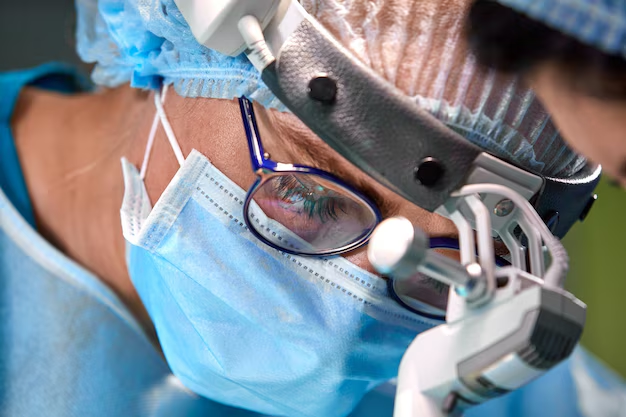Understanding the Cloudy Film After Cataract Surgery: Causes and Insights
Cataract surgery is often considered one of the most common and successful surgical procedures performed today, dramatically improving vision for millions of individuals each year. However, some patients experience a cloudy or blurry vision post-surgery, commonly referred to as a "film" on the eye. If you've recently undergone cataract surgery and are noticing this film, you’re not alone. Understanding what causes this and how it can be managed is crucial for those on the road to recovery.
Cataract Surgery: A Quick Recap
To grasp why a film might develop post-surgery, it’s beneficial to briefly understand what cataract surgery entails:
What Are Cataracts? Cataracts occur when the lens of the eye becomes clouded, leading to decreased vision. It’s a natural part of aging but can be exacerbated by factors such as diabetes or trauma.
The Surgical Procedure: During cataract surgery, the cloudy natural lens is removed and replaced with a clear artificial lens called an intraocular lens (IOL). This procedure is typically quick, with minimal discomfort.
With this foundation in mind, let's delve into why some people develop a cloudy film post-surgery and what this means for your vision recovery journey.
What Causes the Cloudy Film After Cataract Surgery?
Posterior Capsule Opacification (PCO)
One of the most common reasons for the perceived film is Posterior Capsule Opacification (PCO). Here's what you need to know:
Understanding PCO: Following cataract surgery, a clear membrane known as the lens capsule is left intact to hold the new IOL in place. Over time, this capsule may become cloudy, leading to what patients describe as a film over their eye.
Symptoms Experienced: The symptoms closely mimic those of the original cataract, including blurred vision, glare, and halos around lights.
Why It Happens: The cloudy film results from cells left behind after surgery that grow over the capsule. It can occur weeks, months, or even years after the procedure.
Other Potential Causes
While PCO is the primary cause, other factors may contribute:
Dry Eye Syndrome: Post-surgery dryness is common and can make the eye feel gritty, sometimes affecting vision clarity.
Inflammation or Swelling: Some inflammation is typical after surgery, but if it doesn’t subside, it can lead to vision issues.
Residual Refractive Errors: These occur when there’s an unexpected change in vision, like myopia or hyperopia, post-surgery due to the new lens.
Managing and Treating PCO
A proactive approach is critical in managing PCO and restoring clear vision:
YAG Laser Capsulotomy
The go-to treatment for PCO is a YAG laser capsulotomy:
What It Is: This non-invasive procedure uses a laser to create an opening in the cloudy capsule behind the lens, which clears the vision immediately.
Procedure Duration: Quick, often completed in a few minutes, with most patients resuming normal activities right away.
Safety and Effectiveness: Generally considered safe with minimal risks, thanks to advances in laser technology.
Tips for Post-Procedure Recovery
Even though the procedure is quick, some best practices can aid recovery:
Avoid Rubbing the Eyes: It’s crucial to avoid eye irritation post-procedure to ensure optimal healing.
Follow-up Care: Regular check-ups with your ophthalmologist are essential to monitor eye health and vision clarity.
Other Considerations Post-Cataract Surgery
While dealing with a cloudy film can be concerning, addressing it promptly often leads to improved outcomes. Here are some practical considerations:
Regular Eye Exams
Routine eye exams can help catch issues early:
Monitoring the IOL: Ensures the position and function of the artificial lens are optimal.
Detecting Other Conditions: Regular check-ups can help monitor underlying conditions, like glaucoma, which might affect vision.
Eye Health Maintenance
On a broader scope, maintaining eye health post-surgery is essential:
Stay Hydrated: Ensures your eyes are well-lubricated, minimizing dryness.
Proper Nutrition: Foods rich in omega-3, vitamins A, C, and E, and antioxidants are beneficial.
Lifestyle Considerations
Incorporate eye-friendly habits into daily life:
Wear UV Protection: Sunglasses can protect eyes from harmful UV rays, which is especially crucial after surgery.
Limit Screen Time: Reducing exposure to screens can minimize eye strain.
Frequently Asked Questions: Demystifying the Film
Here are answers to some common concerns you might have:
Can PCO Be Prevented?
While not entirely preventable, advancements in surgical techniques and IOL designs strive to minimize the risk.
Is YAG Laser Capsulotomy Painful?
Most patients report minimal discomfort, and it’s usually performed under topical anesthesia.
When Should I Seek Treatment?
If you notice any disruption in vision after cataract surgery that doesn’t improve with time, consult your eye care professional promptly.
Key Takeaways for a Smooth Recovery
Here's a quick summary to keep in mind:
- 🕶️ Protection Matters: Use UV-protective eyewear to shield your eyes.
- 💧 Stay Hydrated: Keeping your eyes moisturized aids healing and comfort.
- 🩺 Regular Check-ups: Consistent follow-ups can catch issues early on.
- 🛠️ YAG Laser = Quick Fix: This effective procedure can easily resolve PCO issues.
Insightful Closure to Your Vision Journey
Experiencing a cloudy film after cataract surgery can feel frustrating. However, knowing its causes, particularly the common occurrence of PCO, empowers you with the knowledge needed to seek timely treatment. By following through with regular eye care and engaging in healthy lifestyle practices, you lay the groundwork for ongoing eye health and clarity.
Your vision journey doesn’t stop after surgery; being informed and proactive is the best approach to maintaining a crystal-clear view of the world around you. Remember, if any concerns arise, consult with your healthcare provider to explore tailored solutions that suit your situation.
